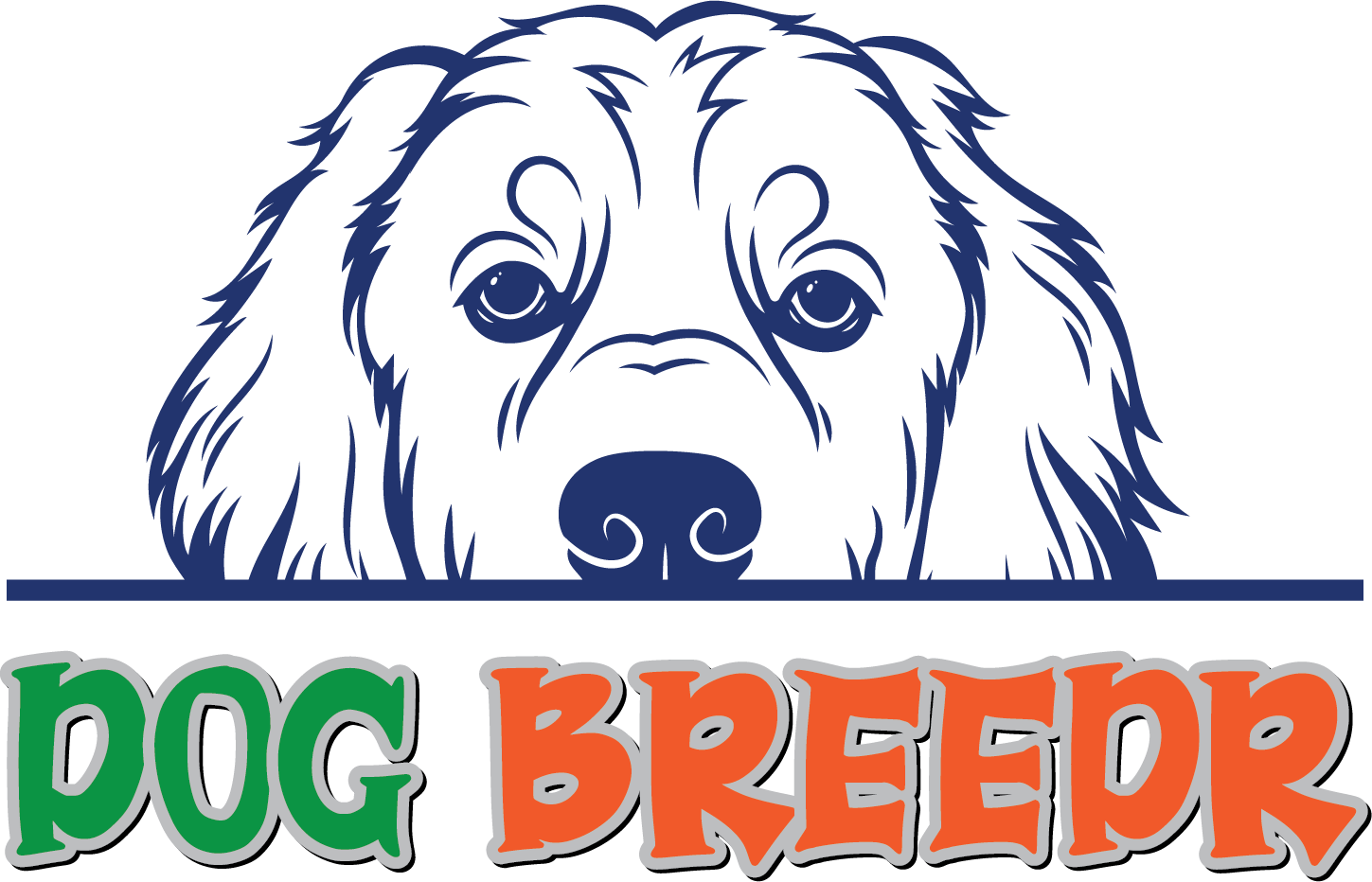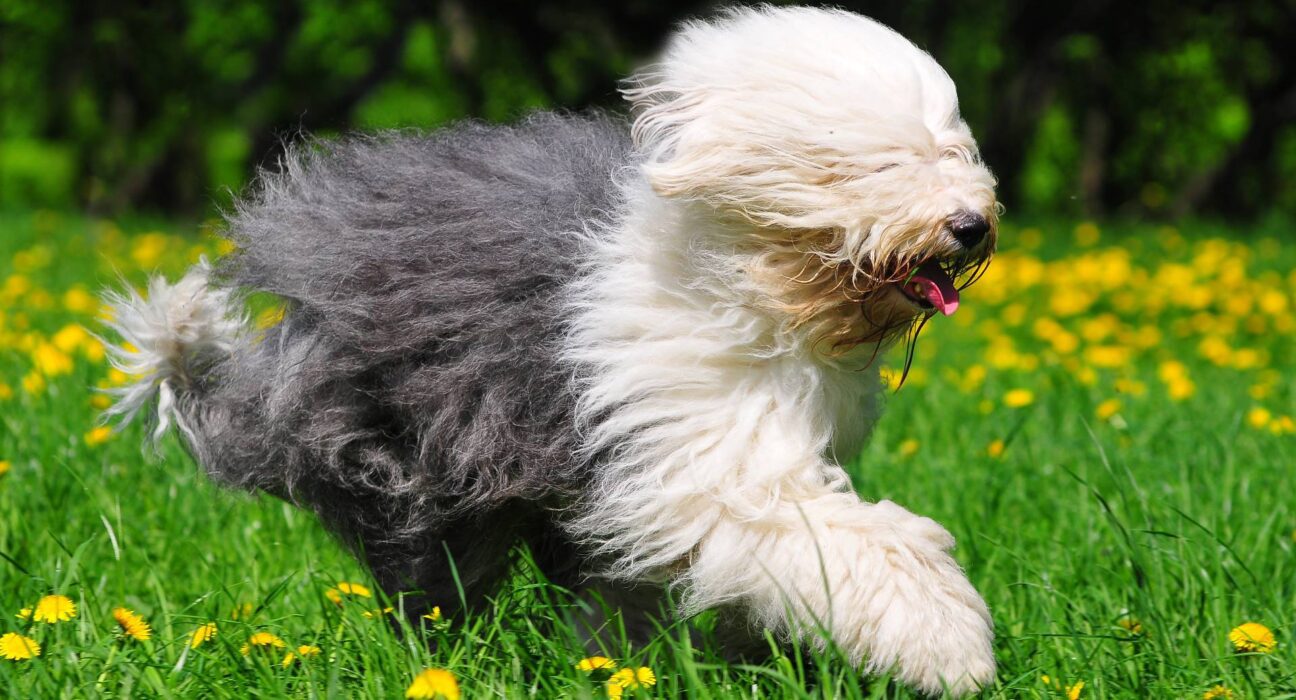The Old English sheepdog is a large breed of herding dog originating in England. It is also known as the Bobtail or OES for short.
The breed was developed in the 18th century to help farmers herd sheep and other livestock. It is a stocky, well-muscled breed that stands between 21 and 26 inches tall and weighs between 70-90 pounds.
Its dense coat is weatherproof, making it an ideal working dog even in rough terrain or inclement weather.
The Old English sheepdog has a long history of being a loyal companion and dependable worker on farms worldwide.
Old English Sheepdog History
The exact origin of the Old English sheepdog remains unknown, but it likely descended from a variety of herding dogs bred in England centuries ago.
It is believed to be a mix of the Bearded Collie, Russian Owtchar, and several other breeds. The breed was developed specifically for farm work, particularly sheep herding, during the 18th century.
In those days, OESs would follow their masters on long journeys while they moved flocks from place to place.
Appearance
The Old English sheepdog is a large breed with impressive stature. It has a broad head with small ears set wide apart and dark eyes that are usually surrounded by long fur.
Its body is powerful and muscular but not overly robust. Its legs are straight and strong, and its feet are round with well-arched toes.
OES has a long, shaggy coat that is thick and weatherproof. The most common colors for the breed are gray, blue, or silvery shades of black and white.
Personality
The Old English sheepdog is an intelligent and loyal breed with a strong sense of duty. They make excellent family companions who love to be around people and will become very attached to their owners.
They need regular exercise and should be supervised for a short time as they can become bored easily. They are very protective of their home and family and may bark when strangers come near but are usually friendly to familiar visitors. OESs get along well with other dogs, cats, and children if raised together.
Care & Grooming
- Brushing
When it comes to grooming your Old English sheepdog, brushing is essential for maintaining the health of their thick double coat.
This breed sheds a lot, and regular brushing helps prevent mats from forming in the fur. It also helps distribute the natural oils more evenly throughout the coat.
Brushing should be done at least twice a week with a slicker or wire-pin brush. For best results, you can also use an undercoat rake to remove excess hair between grooming sessions.
- Bathing
When bathing your Old English sheepdog, only baths as needed are recommended because they can dry out their skin and coat if done too often.
Use only mild shampoos specifically formulated for dogs since human shampoos contain harsh detergents that can irritate the skin.
Make sure to rinse all shampoo out of the fur thoroughly, and then apply a conditioner or leave-in product to help keep their coat soft and manageable.
- Regular trimming
Regular trimming is also important if you want your Old English sheepdog to look neat. Because of their thick double coat, it can be difficult for them to maintain a proper body temperature in warmer months.
To prevent this from happening, trim around the feet, ears, face, and tail so that air can circulate more easily through their fur.
However, take care not to trim too much, as the coat provides natural insulation against cold weather conditions.
- Nail care
Lastly, remember nail care! Regularly checking your dog’s nails for length is important to help prevent discomfort and injury.
If nails become too long, they can cause pain and irritation when walking or running on hard surfaces. Trimming nails helps improve traction on slippery floors and prevents dirt from collecting underneath them.
Trimming the nails every two to four weeks using a pair of nail clippers specifically designed for dogs is best.
Make sure to clip the tips of the nails, being careful not to cut too close to the quick since that can be painful and cause bleeding. Additionally, you can use an emery board or pumice stone to smooth rough edges after trimming.
With regular grooming and care, your Old English sheepdog will look great and stay healthy for many years.
Regular maintenance helps ensure their coats stay healthy and gives them a bit of extra pampering they’re sure to appreciate.
Following these simple grooming tips, you can ensure your Old English sheepdog stays looking and feeling great.
Overall, the Old English sheepdog is a loyal and hardworking breed that loves being around people and has been cherished by farmers worldwide for centuries.
Its long, shaggy coat may require extra care, but it will reward its owners with affection and loyalty. With the right amount of exercise and attention, the Old English sheepdog can be an amazing companion for life.
Health Issues
- Hip and elbow dysplasia
Hip and Elbow Dysplasia is a common orthopedic condition in Old English Sheepdogs. It occurs when the leg bones do not form correctly, leading to malformed joints.
This can cause pain and lameness and an increased risk of arthritis. Regular exercise and weight management are essential for healthy hips and elbows in Old English Sheepdogs.
- Eye diseases
Eye diseases are another common health concern for Old English Sheepdogs. Conditions such as progressive retinal atrophy can lead to blindness in severe cases if left untreated.
Genetics, age, environment, and nutrition all play a role in developing eye conditions, so it’s important to get regular check-ups with your veterinarian to monitor your dog’s vision.
- Autoimmune hypothyroidism
Autoimmune hypothyroidism is an autoimmune disease that can cause low thyroid hormone levels. Symptoms include weight gain, hair loss, and fatigue. Early diagnosis is important to ensure a successful outcome in treating the condition.
- Deafness
Deafness is another potential health issue for Old English Sheepdogs. Deafness can be caused by genetics or environmental factors such as loud noises or exposure to certain drugs.
If your dog appears to be deaf, it’s important to schedule an appointment with your veterinarian right away so they can evaluate the situation and recommend appropriate treatments.
- Heart disease
Finally, heart disease is a common concern in Old English Sheepdogs. Many cases are due to genetic defects, while environmental factors may cause others.
Regular check-ups with your veterinarian will help identify any potential issues early on, allowing for appropriate treatments and management of symptoms.
Old English Sheepdogs are prone to various health concerns, including hip and elbow dysplasia, eye diseases, autoimmune hypothyroidism, deafness, and heart disease.
Early diagnosis is key in treating these conditions, so regular check-ups with your veterinarian are essential. Old English Sheepdogs can lead long and healthy lives with proper care and attention from their owners.
Conclusion
The Old English sheepdog is a loyal and hardworking breed that has been part of farming households worldwide for centuries. It is incredibly intelligent and bonds easily to its family.
It loves being around people and requires regular brushing, grooming, and exercise to stay healthy and happy.
The OES makes an excellent family pet that will shower its owners with love, loyalty, companionship, and protection if raised correctly.
So, if you’re looking for a devoted and loyal friend that will be with you for life, the Old English sheepdog might be the perfect fit.

